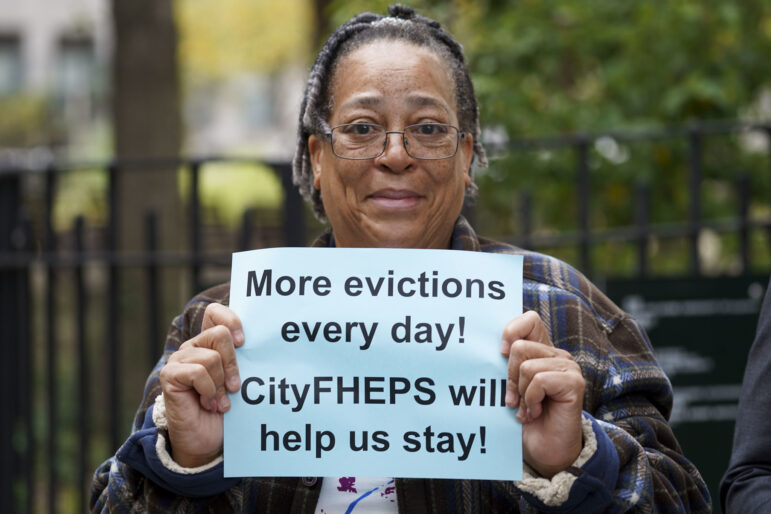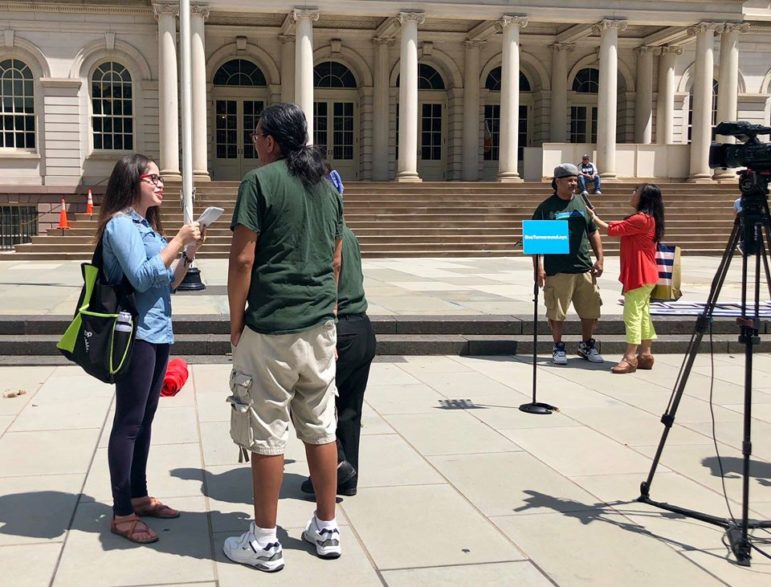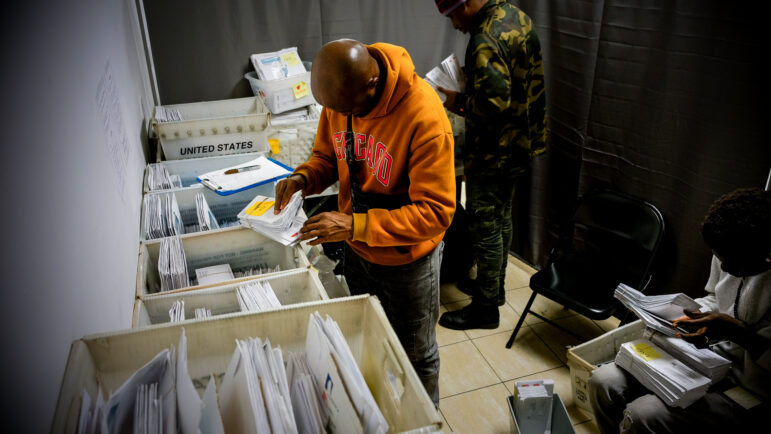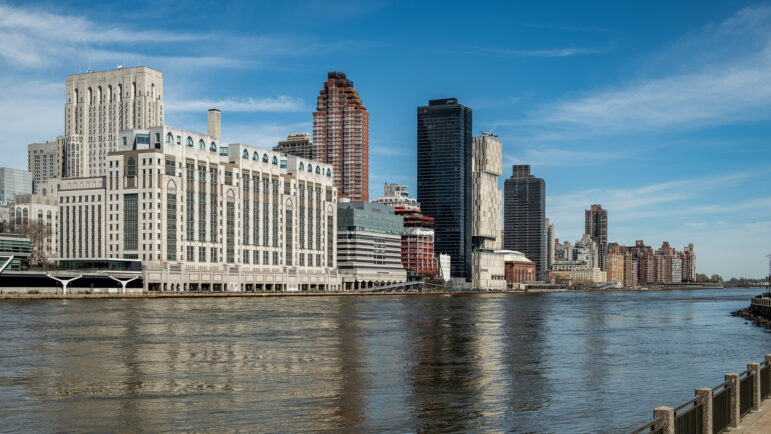From his fifth-floor apartment window on Longfellow Avenue in the South Bronx, Dave Reed can admire the park in the making across the street. He likes the lampposts, which reminds him of the ones used in Central Park, and he’s proud of the fledgling southwestern and West Indian trees along the playground. “The sight just grabs you,” he says quietly.
The park, Rock Garden, gets its name from the large boulder that it’s built upon. The rock outcropping takes up half the block, and reaches over 15 feet off the ground on the Longfellow Avenue side. A pathway will allow visitors to walk up the hilly side to its top. More trees and shrubs will be added later, but for now, except for a playground, a few seating areas and a flagpole, the landscape is mostly bare.
But it’s still a lot better than the mess that it replaces. Ten years ago, Rock Garden was an unofficial dump, filled with junked cars and old bathtubs. For years, community leaders approached different city and state administrations to do something about it. But the requests never got anywhere.
“They laughed at us and told us we were crazy,” says Reed, a retired accountant who oversees the park project. He recalls one city administrator telling him: ‘You can’t do anything with that eyesore.’
Finally, in 1995, the local community development group Mid-Bronx Desperadoes got an initial grant of $75,000 from the Department of Agriculture to rehabilitate the site. As the cleanup began and brought new ideas for the park, other donations came in, including $2 million from local politicians.
The design of the garden shows its cooperative beginnings. Initially, hundreds of locals met with MBD to list their needs. The list they came up with included an amphitheater for cultural events, a basketball court and two playgrounds. Compromises, like putting in sprinklers instead of a pool, had to be made. “They liked the idea” of the sprinklers says Reed, laughing, “but they would’ve liked the pool better.”
Five years of construction and over a million dollars later, the dump was transformed. The trash was cleared out. In certain places, the rock was jackhammered down by four to five feet to create a short wall that residents can sit on. An even bigger job was shearing off eight to nine feet of rock to create a waterfall.
So far only one-third of the park has been finished, although it opened on June 3. Early next year, residents can look forward to the amphitheater and the basketball court, as well as a possible revival of the neighborhood’s international festival, canceled two years ago.
“The idea for this is 10 years old,” says Reed, looking at the park. “It used to be all rubbish.”








